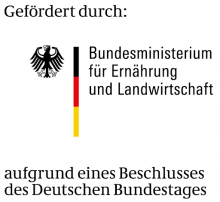// LIGHT AT THE END OF THE TUNNEL – THE RIVER AHR 2022
In April 2020 water samples were taken from a stretch of the river Ahr at Dernau where two weeks previously salmon parr had been introduced into the river. On the night of the 14th and 15th of July 2021 catastrophic floods inundated the whole of the Ahr river valley causing considerable damage the river system and the loss of 134 lives.
The devastation to the aquatic ecosystem was immense and almost 1 year on the rebuilding and recovery of both human and natural resources continues and it will be many years before any type of recovery could be expected.
One gleam of hope in this darkness for the biodiversity of the river and the pre-flood existant salmon population has been brought to light through a study of the Heinrich Heine University and TUNATECH GmbH as part of the national “GeMoLAR” project using eDNA. This technique has been used extensively to look at biodiversity and a specific test has been developed to establish the presence of the Atlantic salmon Salmo salar within the Rhine system. Johannes Kürten from the Heinrich Heine University Düsseldorf has been examining different tributary rivers of the Rheinsystem and especially the brooding locations for salmon eggs. Early experiments in the laboratory with both eggs and larvae of the Atlantic salmon provided by the Hasper Talspere Salmon Centre have enabled a more flexible tool to be used to look at salmon distribution. During the course of this work water samples were taken at different sites along the flooded area of the river Ahr around Dernau as is shown on the map below.
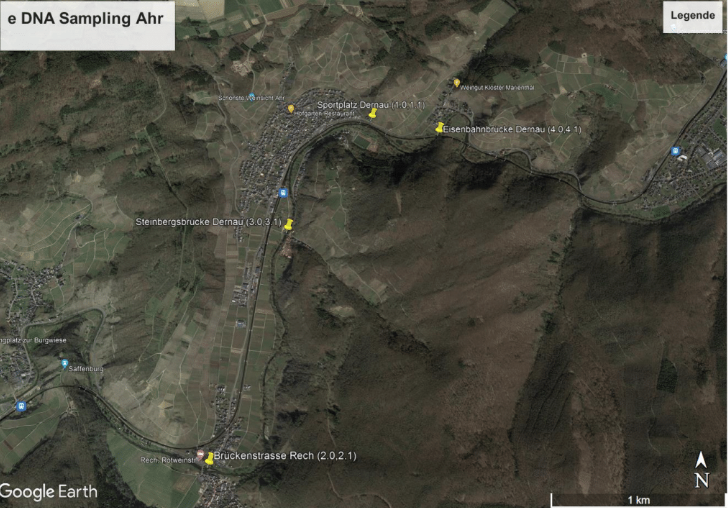
GPS Cooridinates of the four eDNA water sampling sites on the River Ahr approximately one year after severe flooding. Sampling points are shown by the yellow markers. In 2020 Salmon parr had been placed in the river upstream of the Eisenbahnbrücke.
In the laboratory of Tunatech qPCR analysis was carried out together with Florian Borutta on the samples together with reference samples of salmon tissue . The first results are shown below:
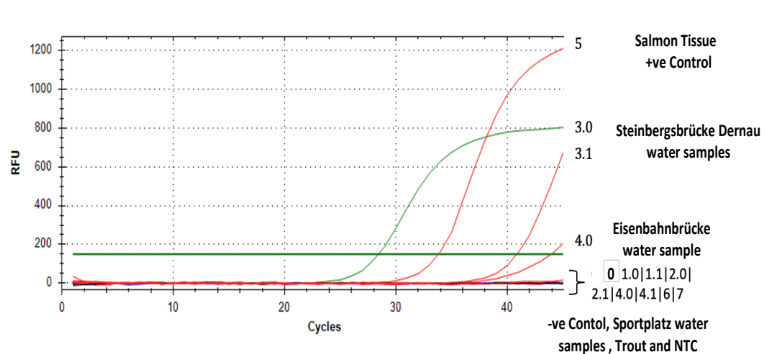
qPCR analysis of water samples taken from the are river together with controls.
An increasing RFU value indicates the amplification of specific DNA.
It can be seen that the salmon tissue (positive control ) gives a clear signal for the both the water samples taken at the Steinbergsbrücke in Dernau . One of the samples taken at the Eisenbahnbrücke lower down the river in the direction of the Rhine also showed a positive signal. All other samples including ones for the Sportzplatz , the negative controls in the NTC and Trout samples did not give a response.
Melt curves for samples also confirmed the identity of the salmon containing samples as shown below in the diagram.
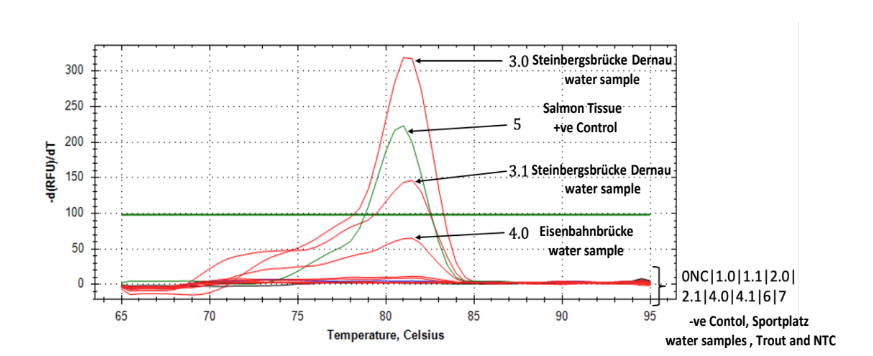
Melt curves from the qPCR of the water samples from the Ahr river indicating a positive result for salmon tissue control, the Steinbergsbrücke and the Eisenbahnbrücke water samples. All samples showing the same temperature profile for their peak activity.
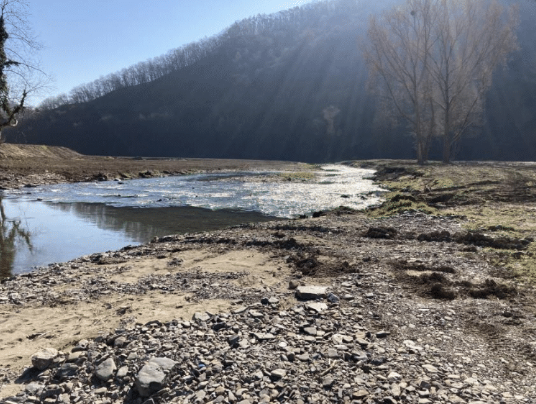
River Ahr opposite the Sportplatz in Dernau in May 2022 after the floods where no traces of salmon eDNA were found.
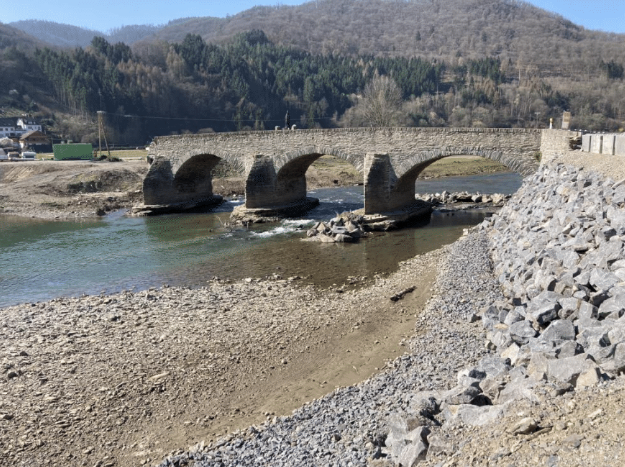
River Ahr Brückenstrasse, Rech in May 2022 after the floods where no traces
of salmon eDNA were found.

River Ahr Steinbergsbrücke in May 2022 after the floods where traces
of Salmon eDNA were found.
The Results of the present study indicate that fish are still present in the river system and have been able to survive the floods and the habitat destruction so far. The critical period will be in the summer months if enough food material is present.
